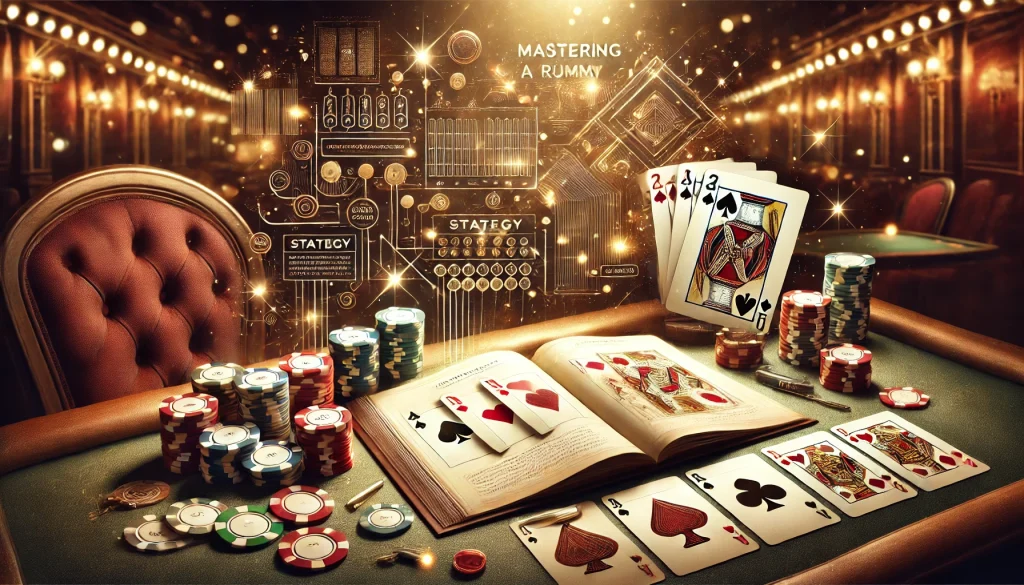Description

Rummy Game 51: rummy culture A Complete Guide The combination of skill, strategy, and a little bit of luck in this well-known card game has enthralled players worldwide. 777 slots A standard 52-card deck and one or more jokers, depending on the variation, are used in this game, which is usually played with two to six players. Being the first player to lay down all of your cards is the ultimate goal of Rummy, which primarily involves using the cards in your hand Classic 777 Slots APK to create valid sets and sequences. The requirement that players must score 51 points or more in their melds in order to declare victory is where the name “Rummy Game 51” originates. Because players must monitor their opponents’ progress in addition to concentrating on creating their own melds, this point system further complicates the game.
Players continuously draw & discard cards in this dynamic game, which makes it crucial to modify strategies in response to the changing dynamics of play. Understanding the goals and regulations of Rummy Game 51 is essential to enjoying it to the fullest. Depending on how many people are playing, each player is dealt a certain number of cards, typically seven or ten. A draw pile is formed by the remaining cards, and the discard pile is initiated by placing the top card face-up.
The players alternately draw a card from the draw or discard pile, then discard one card from their hand. Generating valid melds, which can be sets or sequences, is the primary goal. Three or four cards of the same rank but different suits make up a set, whereas three or more cards of the same suit in a row make up a sequence.
A set could be 7♣, 7♦, and 7♥, whereas a sequence could be 4♠, 5♠, & 6♠. Players must try to finish their melds with 51 points before their rivals do. Numbered cards are worth their face value, face cards (Kings, Queens, & Jacks) are worth ten points each, and Aces can be worth one or eleven points, depending on how they are used in sequence. In Rummy Game 51, counting cards is a crucial ability that can greatly increase a player’s chances of winning. Players can make well-informed decisions about which cards to keep and which to discard by keeping track of which cards have been drawn & discarded.
In addition to aiding in the formation of melds, this technique gives information about the cards that opponents might be gathering. A player may decide not to keep similar cards that could turn into dead weight, for example, if they see that multiple high-value cards have already been discarded. In Rummy Game 51, discarding is just as crucial.
The cards that players decide to discard can give their opponents important information, so they must choose carefully. It is possible to unintentionally help an opponent form their melds by discarding a card that they are probably collecting. As a result, it makes sense to look for trends in the draws and discards of opponents. It might be wise to forego discarding cards entirely if an opponent routinely selects particular suits or ranks from the discard pile. The key to a winning strategy in Rummy Game 51 is a blend of foresight, flexibility, and observation.
Prioritizing the formation of sequences over sets whenever feasible is one useful strategy. Because they need fewer unique ranks than sets, sequences are typically simpler to finish. Also, having different sequences can give players more gameplay flexibility by enabling them to modify their plans in response to the cards they draw. Effective hand management is another essential component of creating a winning strategy. Holding onto a combination of high- and low-value cards will help players maintain the balance of their hand.
Although they can be a major factor in getting to the 51-point mark, high-value cards can also turn into liabilities if they are not melded by the end of the game. Low-value cards, on the other hand, carry less risk but might not make a significant contribution to reaching the goal. During gameplay, opportunities for both offense and defense can be created by striking a balance between these two card types.
In Rummy Game 51, Joker cards are wild cards that can form melds with any other card. They are extremely valuable assets during gameplay because of their versatility. Jokers should be used strategically by players to finish challenging sets or sequences that would otherwise be difficult to accomplish with the cards at their disposal. For example, a joker can be used as the third King to help a player lay down their meld if they have two Kings but no third King for a set. But it’s crucial to use jokers sparingly.
If other players are on the verge of winning, holding onto them for too long may result in lost melding opportunities. At the beginning of the game, players should also be careful not to reveal too many jokers in their melds because this can give opponents a clue about their strategy and possibly enable them to block subsequent plays. The player who uses jokers strategically can change the outcome of the game. Knowing the difference between sequences and sets is essential for winning Rummy Game 51. Because sequences are inherently flexible and let players combine cards from different ranks within the same suit, they are frequently given priority.
When trying to finish melds quickly or when drawing from the discard pile, this flexibility can be especially helpful. Although sets are just as important, they call for more precise combinations and can occasionally result in dead ends if players are unable to draw the required ranks. A player might be left holding those expensive cards at the end of the game, for instance, if they have two Jacks and are unable to draw another Jack or a joker.
Players should therefore frequently evaluate their hands and shift their attention between creating sets & sequences depending on the cards they are holding and what they see in their opponents. Gaining proficiency in Rummy Game 51 calls for repetition & an openness to picking up new skills with each game. Playing with different opponents on a regular basis, who may have different tactics and styles, is one useful tip.
Players may be able to modify their gameplay and create previously unthought-of strategies as a result of this exposure. Also, studying previous games can give important information about what went well and what needs improvement. Making mental notes about which cards have been played during the game is another helpful tip.
Observing your opponents’ and your own discards can give you important clues about the melds they might be attempting to create. Players are better equipped to decide which cards to keep or discard when they are aware of this. Advanced strategies that call for more in-depth analytical reasoning and psychological understanding of opponents’ actions are used by those who want to improve their Rummy Game 51 skills. One tactic is bluffing, which is the deliberate discarding of cards that could give opponents false information about the makeup of your hand.
For instance, opponents may assume you are not pursuing that suit if you are collecting hearts but discard a heart card early on. A more sophisticated strategy is to strategically time your melds. Waiting until your hand is stronger can sometimes produce better results, despite the temptation to lay down melds as soon as possible. Holding back your melds until you are closer to winning or until you know more about your opponents’ hands can help you take advantage of opportunities & possibly throw off their plans. In summary, mastering Rummy Game 51 entails comprehending its goals and regulations as well as creating effective playing strategies.
Players can greatly increase their chances of winning this captivating card game by practicing strategies like card counting and discarding, making good use of jokers, and concentrating on sequences and sets. Anyone can learn to play Rummy Game 51 and appreciate its unique combination of strategy and competition with time and practice.lottery sambad old
